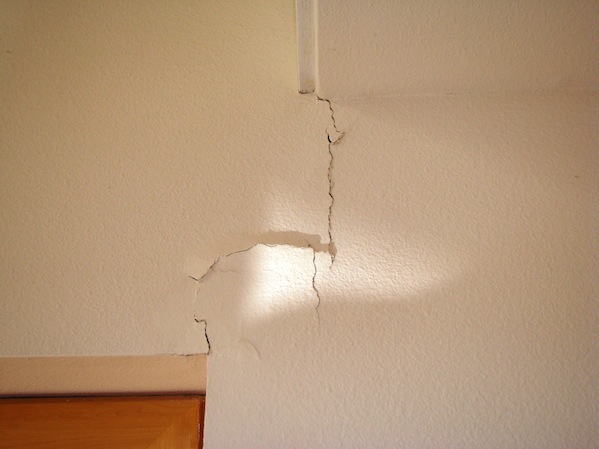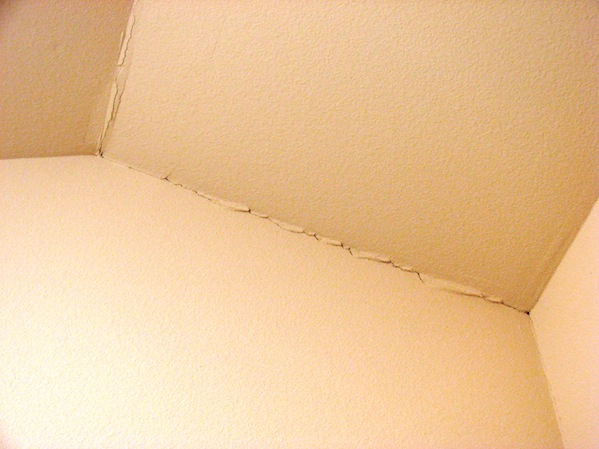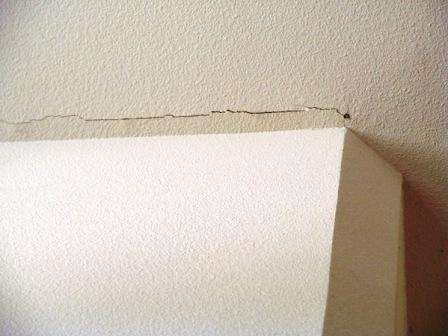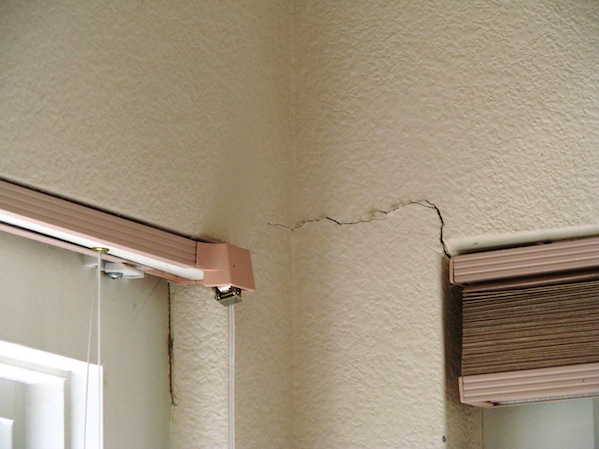Mastering Roof Inspections: Asphalt Composition Shingles, Part 29
by Kenton Shepard and Nick Gromicko, CMI®
The purpose of the series “Mastering Roof Inspections” is to teach home inspectors, as well as insurance and roofing professionals, how to recognize proper and improper conditions while inspecting steep-slope, residential roofs. This series covers roof framing, roofing materials, the attic, and the conditions that affect the roofing materials and components, including wind and hail.
Changing to a heavier roof-covering material can cause compression cracking in drywall because the added weight can cause additional settling in the home’s structural framing.
This condition can actually be dangerous if the roof framing is not adequate to support the additional weight. Although the most likely damage will be to interior or exterior wall coverings, as you see here, there’s also a potential for catastrophic failure of the roof structure, especially in older homes.
An example of this condition may be caused by changing from a lightweight covering, such as 20-year, 3-tab asphalt shingles, which may weigh 200 pounds per square, to a heavier material, such as heavy, multiple-layer asphalt shingles or tiles, which may weigh close to 500 pounds per square.
Look for the following clues:

- cracking in drywall, but no evidence of foundation settling. Compression cracks are typically vertical or horizontal. Look for cracks that follow corner bead, drywall seams, or junctions where walls meet ceilings. Diagonal cracks emanating from the corners of doors and windows are usually an indication of foundation movement, rather than compression.

- similar homes in the neighborhood that have lighter roof-covering materials. Seeing what’s on surrounding roofs is sometimes a good clue about what the original roof-covering material is on the home you’re inspecting.
The homes surrounding this one have asphalt shingles and shakes. The following images are examples of compression cracks found in this home.

This crack runs between a doorway and the underside of an open walkway.

This is in a closet at the wall-ceiling and ridge intersections.

This is along the wall-ceiling intersection.
Drywall compound has cracked along the edge of the drywall tape.

This is off the corner of a window.

- intersections between pass-throughs and an architectural opening above a pass-through. If you suspect that this type of change has taken place, you should recommend that the home sellers provide documentation showing that the change was approved by a licensed structural engineer. If they cannot provide documentation, you should recommend that the home be inspected by a structural engineer for safety reasons.
**************************************************
Learn how to master a roof inspection from beginning to end by reading the entire InterNACHI series: Mastering Roof Inspections.
Take InterNACHI’s free, online Roofing Inspection Course
Mastering Roof Inspections
Roofing Underlayment Types
Inspecting Underlayment on Roofs
Fall-Arrest Systems
Roofing (consumer-targeted)
More inspection articles like this

